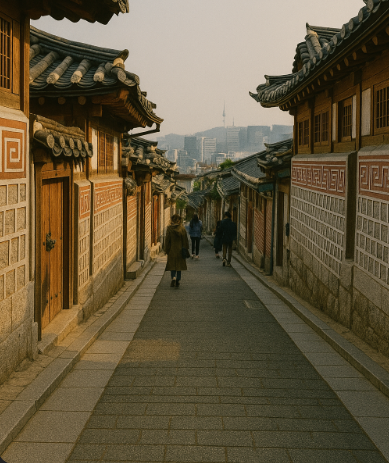South Korea, with its dynamic culture and rapidly evolving modern music scene, also boasts a rich heritage of traditional music known as “Gugak.” Unlike its contemporary counterpart, K-pop, Gugak offers a deep dive into the acoustic landscape and cultural stories of Korea’s past. In this article, we’ll explore various components of Korean traditional music, the instruments involved, and its cultural significance.
The Origins of Gugak
Gugak, literally translated as “national music,” has origins that trace back to ancient Korean history. It encompasses both court music and folk music, each representing a different facet of Korean life. Court music, known as “Jeongak,” was performed in royal palaces and features slow, contemplative rhythms meant to align with the peaceful nature of the ancient Korean court. In contrast, folk music, or “Minsogak,” is livelier, reflecting the daily experiences and beliefs of ordinary Korean people.
Instruments Used in Gugak
Traditional Korean music is performed using a unique set of instruments. Among these, the most iconic is the “Gayageum,” a twelve-string zither that produces a wide range of sounds from soft, lyrical tones to more percussive rhythms. Another significant instrument is the “Janggu,” an hourglass-shaped drum essential to creating the music’s rhythmic foundation. Wind instruments like the “Daegeum” and “Piri” add melodic elements, each contributing to the rich palette of sounds characteristic of traditional Korean music.
Styles and Performances
Gugak embodies a range of styles and forms. For instance, “Pansori” is a genre of musical storytelling that combines singing, narration, and dramatic art. Performances can last several hours, detailing epic tales from Korean folklore. Furthermore, “Sanjo” is a style of solo instrumental music that emphasizes improvisation and emotional expression, showcasing the performer’s virtuosity. Gugak’s diversity in styles demonstrates the versatility and depth of Korea’s musical heritage.
The Cultural Significance of Gugak
Gugak holds a significant place in modern Korean culture as a reminder of the nation’s rich history and tradition. Efforts to preserve and promote traditional music continue, with institutions such as the National Gugak Center providing education and performances to keep the tradition alive. Gugak is also celebrated in festivals, offering both locals and tourists alike an immersive insight into Korea’s cultural identity.
Integration with Modern Music
While traditional in its origins, Gugak is not isolated from modern musical influences. Korean musicians are increasingly blending elements of Gugak with contemporary genres, introducing this cultural art form to a wider audience. This fusion maintains the essence of traditional sounds while making them accessible and relevant in today’s global music scene.
| Instrument | Type | Description |
|---|---|---|
| Gayageum | String | A twelve-string zither known for its soft, lyrical sound |
| Janggu | Percussion | An hourglass-shaped drum central to rhythm |
| Daegeum | Wind | A large bamboo flute that provides melodic elements |
FAQ
What is the difference between Jeongak and Minsogak?
Jeongak is court music with slow tempos, while Minsogak is folk music characterized by lively rhythms.
How can I experience Gugak in Korea?
Attend performances at the National Gugak Center or regional cultural festivals to experience live Gugak music.
Are there modern influences in Gugak?
Yes, contemporary musicians often integrate traditional instruments and styles with modern music genres.
Summary
- Gugak is an umbrella term for Korean traditional music, encompassing various styles.
- Traditional instruments like the Gayageum and Janggu are essential to Gugak.
- Gugak is culturally significant and celebrated through performances and festivals.
- Modern musicians blend traditional music with contemporary styles.
#KoreanMusic #Gugak #TraditionalKoreanMusic #KoreanCulture #Gayageum #Janggu #Pansori #Sanjo #Jeongak #Minsogak #NationalGugakCenter #KoreanTradition #KCulture #VisitKorea #KoreanHeritage #CulturalPreservation #KoreanFolkMusic #KoreanCourtMusic #KMusic #TraditionalInstruments #Daegeum #KoreanArt #CulturalFusion #MusicHeritage #FolkTradition #MusicFestival #EthnicMusic #KoreanHistory #Arts #SEO #GlobalMusic #KoreanWave
